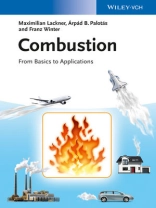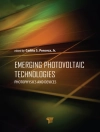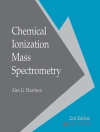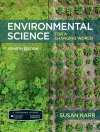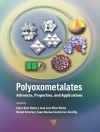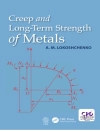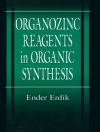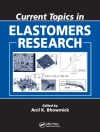Combustion, the process of burning, is defined as a chemical reaction between a combustible reactant (the fuel) and an oxidizing agent (such as air) in order to produce heat and in most cases light while new chemical species (e.g., flue gas components) are formed. This book covers a gap on the market by providing a concise introduction to combustion. Most of the other books currently available are targeted towards the experienced users and contain too many details and/or contain knowledge at a fairly high level. This book provides a brief and clear overview of the combustion basics, suitable for beginners and then focuses on practical aspects, rather than theory, illustrated by a number of industrial applications as examples. The content is aimed to provide a general understanding of the various concepts, techniques and equipment for students at all level as well as practitioners with little or no prior experience in the field.
The authors are all international experts in the field of combustion technology and adopt here a clear didactic style with many practical examples to cover the most common solid, liquid and gaseous fuels. The associated environmental impacts are also discussed so that readers can develop an understanding of the major issues and the options available for more sustainable combustion processes.
With a foreword by Katharina Kohse-Hoinghaus
สารบัญ
Foreword XIII
Preface XV
1 History of Combustion 1
1.1 Introduction 1
1.2 Timetable 3
1.3 Outlook 10
1.4 Web Resources 15
References 15
2 Fuels 19
2.1 Introduction 19
2.2 Gaseous Fuels 19
2.2.1 Density 21
2.2.2 Specific Heat Capacity 21
2.2.3 Molar Weight 22
2.2.4 Gas Constant 23
2.2.5 Thermal Conductivity 23
2.2.6 Viscosity 23
2.2.7 Heating Values 24
2.2.8 Ignition Temperature 25
2.2.9 Ignition Limits 26
2.2.10 Laminar Flame Velocity 26
2.2.11 Wobbe Index 27
2.2.12 Methane Number 28
2.3 Liquid Fuels 29
2.3.1 Chemical and Physical Characteristics 30
2.3.2 Sulfur Content 30
2.3.3 Ash Content 31
2.3.4 Water Content 31
2.3.5 Carbon Residue 31
2.3.6 Density and Specific Gravity 31
2.3.7 Viscosity 32
2.3.8 Pour Point 32
2.3.9 Cloud Point 32
2.3.10 Flash Point 33
2.4 Solid Fuels 33
2.4.1 Origin of Solid Fuels 34
2.4.2 Biomass 35
2.4.3 Waste or Opportunity Fuels 36
2.4.4 Coal 36
2.4.5 Peat 37
2.4.6 Solid Fuels Characterization 37
2.4.7 Proximate Analysis 38
2.4.8 Ultimate Analysis 39
2.4.9 Physical Properties 41
References 41
3 Combustion Principles 43
3.1 Basic Combustion Calculations 43
3.1.1 Determination of the Quantity of Normal and Oxygenated Air Necessary for Complete Combustion 43
3.1.1.1 Air Requirement of Gaseous Fuels 43
3.1.1.2 Air Requirement for the Combustion of Liquid and Solid Fuels 45
3.1.1.3 Calculations for the Case of Oxygenated Air 47
3.1.2 Calculation of the Volume and the Composition of the Flue Gas 47
3.1.2.1 Flue Gas of Gaseous Fuels 47
3.1.2.2 Combustion Products of Liquid and Solid Fuels 48
3.1.2.3 The Effect of Oxygen Enrichment 49
3.1.2.4 Effect of Temperature and Pressure (Ideal Gas Law) 49
3.1.2.5 Determination of the Actual Excess Air Factor 50
3.1.3 Determination of the Combustion Temperature 51
3.1.4 Heating Values 55
3.1.5 Laminar Flame Velocity 56
3.2 Heat-, Mass- and Momentum Transport and Balance 57
3.2.1 Transport 57
3.2.2 Mass Transport 58
3.2.2.1 Diffusive Mass Transport 58
3.2.2.2 Convective Mass Transport 58
3.2.3 Mass Transfer 59
3.2.4 Heat Transport 60
3.2.4.1 Heat Conduction 60
3.2.4.2 Thermal Radiation 61
3.2.5 Heat Transfer 64
3.2.6 Momentum Transport 65
3.2.7 Balance 67
3.2.7.1 Mass Balance 67
3.2.7.2 Heat Balance 68
3.2.7.3 Momentum Balance 69
3.3 Elementary Reactions and Radicals 69
3.3.1 Elementary Reactions 69
3.3.2 Reaction Rates 70
3.3.3 Temperature Dependence 71
3.3.4 Collision Theory 72
3.3.5 Three-Body Reactions 73
3.3.6 Chemical Equilibrium 74
3.3.7 Gibbs Enthalpy 74
3.3.8 Radicals 75
3.3.9 Development and Analysis of a Set of Reactions 76
3.3.10 Simplification of a Set of Reactions 78
3.4 Ignition 79
3.4.1 Introduction 79
3.4.2 Autoignition 79
3.4.3 Induced Ignition 80
3.4.4 Theoretical Models for Ignition 82
3.4.5 Explosives 83
3.4.6 Flammability Limits 84
3.4.7 Minimum Ignition Energy 85
3.4.8 Quenching and Maximum Experimental Safe Gap (MESG) 85
3.4.9 p T Explosion Diagram 87
3.4.10 Ignition Delay Time 89
3.4.11 Ignitability 90
3.4.12 Octane Number 91
3.4.13 Cetane Number 92
3.4.14 Ignition in Various Combustion Devices 93
3.4.15 Undesired Ignition 94
References 95
4 Environmental Impacts 97
4.1 Pollutants: Formation and Impact 97
4.1.1 Introduction 97
4.1.2 Description of Most Relevant Pollutants 98
4.1.2.1 Unburnt Hydrocarbons (UHC) 98
4.1.2.2 CO 99
4.1.2.3 NOx 100
4.1.2.4 SO2 102
4.1.2.5 Dioxins 102
4.1.2.6 Particulate Matter (PM) 103
4.1.2.7 Soot 106
4.1.2.8 Ash 110
4.1.2.9 Alkali Metals 110
4.1.2.10 Heavy Metals 111
4.1.3 Concepts for Pollutant Reduction 112
4.1.4 Summary 117
4.1.5 Web Resources 118
4.2 Combustion and Climate Change 118
4.2.1 Introduction 118
4.2.2 Primary Energy Production 120
4.2.3 Combustion and Global Warming by Sectors 120
4.2.4 Mitigation of Global Warming in the Context of Combustion 121
4.2.4.1 Energy Efficiency 121
4.2.4.2 Reduction of CO2 Emissions 123
4.2.4.3 Use of Renewable Fuels 123
4.2.4.4 Other Measures Against Climate Change 126
4.2.5 Carbon Sequestration 126
4.2.6 Web Resources 128
References 130
5 Measurement Methods 137
5.1 Introduction 137
5.2 In Situ versus Ex Situ Measurements 139
5.3 Fuel Characterization 140
5.3.1 Proximate and Ultimate Analysis 140
5.3.2 Thermal Analysis (TGA/DSC) 141
5.3.3 Ash Melting 142
5.3.4 Laminar Flame Speed 144
5.4 Investigation of Combustion Processes 144
5.4.1 Selection of Non-optical Methods 145
5.4.1.1 Suction Probe Coupled with GC/MS 145
5.4.1.2 Hot Wire Anemometry 146
5.4.1.3 Thermocouple 147
5.4.1.4 Gas Potentiometric Sensors 147
5.4.1.5 Paramagnetic Analyzer for O2 148
5.4.2 Selection of Optical Techniques 149
5.4.2.1 Chemiluminescence 149
5.4.2.2 Schlieren Photography 150
5.4.2.3 Non-Dispersive Infrared Spectrometer 150
5.4.2.4 Fourier Transform Infrared Spectrometer 151
5.4.2.5 Laser-Induced Absorption Techniques 153
5.4.2.6 Laser-Induced Emission Techniques 157
5.4.2.7 Laser-Induced Scattering Techniques 159
5.4.3 Particle Diagnostics 162
5.4.4 Spray Diagnostics 162
5.4.5 Other Techniques 164
5.4.6 Test Beds 164
5.4.6.1 Open Flames on Laboratory Model Burners 164
5.4.6.2 Combustion Bombs 168
5.4.6.3 Shock Tubes 168
5.4.6.4 Optical Engines 169
5.4.6.5 Pilot Plants 171
5.4.6.6 Combustors Placed on a Test Rig 172
5.4.6.7 Industrial Furnaces with Optical Access Ports 172
5.4.7 Advanced Combustion Control 174
References 176
6 Applications 185
6.1 Burners 185
6.1.1 The Evolution of Combustion Processes 185
6.1.2 The Flame 185
6.1.3 Fuel Preparation, Pre-Processing 186
6.1.4 Requirements of a Burner 187
6.1.5 Burner Classification by the Fuel Used 188
6.1.6 Burner Categories 189
6.1.6.1 Classification Methods for Gas Burners 189
6.1.6.2 Generalized Classification of Gas Burners 191
6.1.7 Burner Control, Automation 193
6.1.8 Flares 193
6.1.9 Categorization of Oil Burners 195
6.1.10 Atomization of the Fuel 196
6.1.11 Mixed Fuel and Alternative Burners 197
6.2 Industrial Boilers 198
6.2.1 Firing Systems for Steam Generation 200
6.2.2 Fixed Bed Combustion 202
6.2.3 Fluidized Bed Combustion (FBC) 206
6.2.3.1 Bubbling Fluidized Bed Combustion (BFBC) 207
6.2.3.2 Circulating Fluidized Bed Combustion (CFBC) 208
6.2.3.3 Dust Firing 210
6.2.4 Summary of Combustion Technologies for Boilers 212
6.3 Industrial Technologies 213
6.3.1 Characteristics of Industrial Heating Installations and Furnaces 213
6.3.2 Metal Industry 214
6.3.2.1 Shaft Furnaces 214
6.3.2.2 Aluminum Melting Furnaces 214
6.3.2.3 Crucible Furnaces 216
6.3.2.4 Annealing and Heat Treatment Furnaces 216
6.3.3 Ceramic Industry 218
6.3.3.1 Glass Melting Furnaces 218
6.3.4 Furnaces Used in Various Industries 220
6.3.4.1 Cylindrical Rotary Kilns 220
6.3.4.2 Chamber Furnaces 221
6.3.4.3 Indirectly Fired Chamber Furnaces 221
6.3.5 Heat Treatment Systems, Heat Treatment Furnace Plants 222
6.3.5.1 Complex Heat Treatment Systems 222
6.3.5.2 Continuous Heat Treatment Furnace Plants 223
6.3.6 Petroleum Industry Tube Furnaces 223
6.3.7 Internal Combustion Engines 223
6.3.7.1 Introduction 223
6.3.7.2 Four-Stroke Engines 224
6.3.7.3 Two-Stroke Engines 225
6.3.7.4 Spark Ignition Engines 226
6.3.7.5 Compression Ignition Engines 227
6.3.7.6 Cycle Analysis and Key Parameters 228
6.3.7.7 Ideal Air Standard Otto Cycle 229
6.3.7.8 Ideal Air Standard Diesel Cycle 230
6.3.7.9 Engine Emissions 231
6.3.8 Gasification and Pyrolysis 231
6.3.8.1 Introduction to Gasification and Industrial Applications 231
6.3.8.2 Fuel Conversion During Gasification 232
6.3.8.3 Gasification Chemistry and Reactions 234
6.3.8.4 Gasification Technologies 235
References 239
7 Safety Issues 241
7.1 Introduction 241
7.2 Fundamentals 241
7.3 Fire Classes 243
7.4 Working Mechanism of Fire Extinguishing Media 244
7.5 Fire Detectors 245
7.6 Deflagrations and Detonations 245
7.7 Dust Explosions 247
7.8 Legal Framework: Example of ATEX in Europe 248
7.9 Preventing and Mitigating the Effect of Explosions in Industry 252
7.10 Aspects of Preventive Fire Protection 253
7.10.1 Flame Retardants Containing Phosphorus 253
7.10.2 Flame Retardants Based on Hydroxides of Al and Mg 254
7.10.3 Organic, Halogen-Containing Compounds 254
7.10.4 Intumescence-Based Systems 254
7.11 Fire Suppression by Oxygen Reduction 255
7.12 Safety by Process Design 255
7.13 Other Important Terms Related to Fire Safety 256
7.13.1 Flashover 256
7.13.2 Loss-of-containment and Fires 256
7.13.3 Flammable Substance Release 257
7.13.3.1 Boiling Liquid Expanding Vapor Explosion (BLEVE) and Vapor Cloud Explosion (VCE) 257
7.13.4 Burning Index (Danger Class, Rating) 258
7.13.5 K Value (KG, KST) 258
7.13.6 Dust Explosion Class 258
7.13.7 Explosion Pressure 259
7.13.8 Limiting Oxygen Concentration (LOC) 259
References 260
Index 261
เกี่ยวกับผู้แต่ง
Maximilian Lackner has been a lecturer on combustion at Vienna University of Technology since 2005. He studied Technical Chemistry at the same university, where he also earned his Ph D degree and completed his habilitation. He obtained a Global Executive MBA from LIMAK
University in Linz, Austria. Between 2004 and 2011 he held several senior positions in the petrochemical industry in Europe and Asia. He has founded four companies and is a member of the advisory board of the VDI and an advisor to the US Department of Energy.
Prof. Arpad B. Palotas is the director of the Institute of Energy and Quality Affairs, as well as the head of the Department of Combustion Technology at the University of Miskolc, Hungary. He obtained his MSc degree in Metallurgical Engineering at the University of Miskolc and an MSc in Chemical Engineering at the Massachusetts Institute of Technology (MIT), Cambridge, MA, USA. Having completed his Ph D studies at the University of Miskolc, he spent years as postdoctoral associate and visiting scientist at MIT and later at the University of Utah (Salt Lake City, UT, USA). At these institutions he continued his research on combustiongenerated aerosols, focusing on soot characterization as well
as on the development of fuel additives for the reduction of soot emission from aviation fuel sources.
Franz Winter is professor of Chemical Engineering at Vienna University of Technology, Austria. He is group leader and head of the Christian Doppler Laboratory for Chemical Engineering at High Temperatures at the Vienna University of Technology. He obtained his academic degrees from the Vienna University of Technology and has specialized in combustion and high temperature reaction kinetics. He has authored more than 300 scientific publications. He is chairman and reviewer on various scientific and technical advisory boards and an active member of the Combustion Institute.
